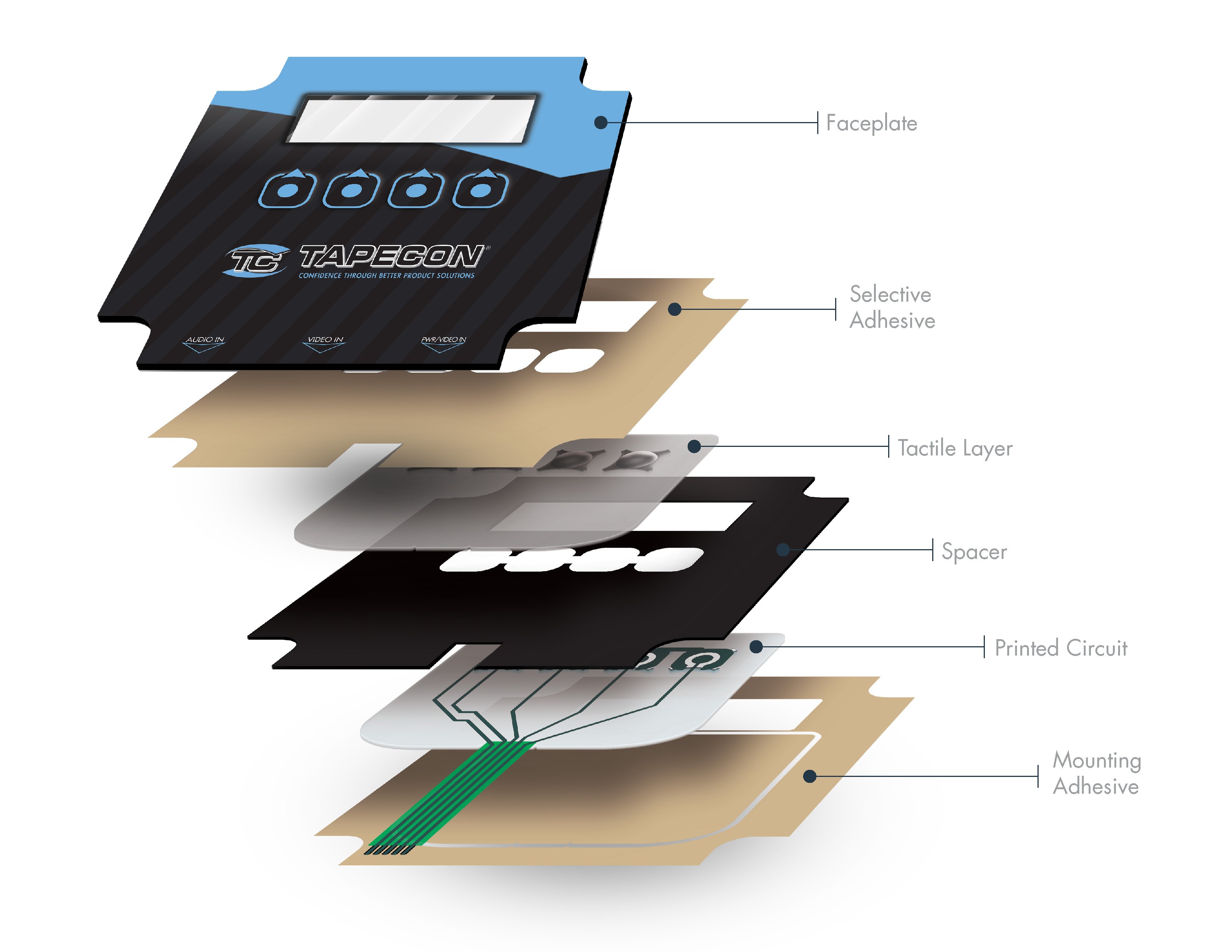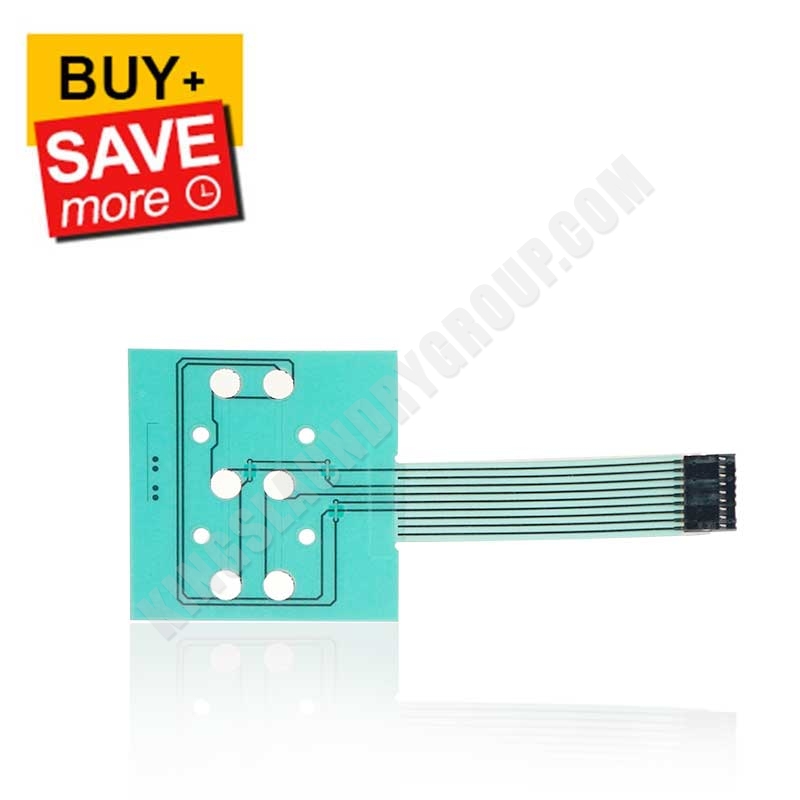The Advantages of Membrane Switches Over Mechanical Switches in Extreme Conditions
Why Membrane Switches Are Necessary for Resilient Control Equipment
Membrane layer switches play a crucial function in ensuring the durability and dependability of control systems across numerous sectors. Their special building and construction permits them to withstand difficult environmental aspects such as humidity, temperature level extremes, and physical wear. This strength not just expands the life-span of the systems they serve but also lessens upkeep needs. As we discover the complex advantages of membrane switches, it becomes evident that their significance goes beyond mere performance, influencing user experience and operational efficiency. What more effects do these qualities hold for the future of control system design?
Review of Membrane Buttons
Membrane switches are flexible and trusted parts generally made use of in various electronic control systems. These buttons contain numerous layers, including a visuals overlay, a spacer layer, and a published circuit layer. The graphic overlay provides both useful and visual layout, while the spacer layer makes sure that the buttons are triggered only when pressed. The printed circuit layer includes conductive traces that finish an electrical circuit when the membrane is pushed, enabling the tool to reply to customer inputs.
Membrane layer buttons are frequently preferred in applications calling for a small and lightweight style, making them ideal for handheld devices, clinical tools, and industrial machinery. They can be tailored to fulfill certain customer requirements and can integrate different functions such as backlighting, tactile comments, and multiple colors. Furthermore, membrane layer switches are resistant to dust, wetness, and contaminants, making them ideal for settings where durability is essential.
Advantages of Toughness
In many applications, the toughness of membrane layer changes deals considerable benefits that improve their total efficiency and dependability. These buttons are designed to endure severe atmospheres, making them optimal for usage popular conditions such as high humidity, severe temperature levels, and exposure to chemicals. Their durable building assists to avoid damage from physical influence, making sure long-lasting functionality and reducing the requirement for constant replacements.
Furthermore, membrane layer switches are resistant to wear and tear, which is critical in applications where constant communication takes place. This resilience equates to reduce maintenance expenses, as companies take advantage of minimized downtime and less service disturbances. Furthermore, the encapsulated design of membrane switches over safeguards inner parts from dust and wetness access, further adding to their life-span.
Another advantage is their capacity to keep regular efficiency with time. With a high resistance for mechanical tension, these switches preserve their responsive feedback and electric honesty, ensuring customer satisfaction. Ultimately, the durability of membrane layer changes not only enhances functional efficiency however also cultivates confidence in their integrity, making them a preferred choice for control systems throughout various fields.
Applications in Different Industries
Sturdy control systems utilizing membrane buttons find comprehensive applications throughout a series of industries, each taking advantage of the one-of-a-kind qualities these switches offer. In the medical field, membrane layer buttons are vital for gadgets such as person monitors and diagnostic devices, where dependability and ease of cleansing are critical. Their resistance to moisture and impurities guarantees they maintain functionality in sterile settings.
The automotive sector leverages membrane layer switches for dashboard controls and infomercial systems, where they offer streamlined, inconspicuous user interfaces that improve customer experience. These buttons are likewise created to stand up to extreme problems, consisting of exposure to severe temperatures and he said resonances.
In industrial settings, membrane layer switches are generally made use of in equipment control board, using responsive responses and longevity needed for high-usage applications. Their capability to stand up to chemicals makes them ideal for producing environments where spills and impurities are regular.

Consumer electronic devices, such as kitchen devices and remotes, also utilize membrane switches for their convenience and cost-effectiveness. On the whole, the versatility and durable nature of membrane layer changes make them vital across different markets, guaranteeing efficient procedure and longevity in control systems.
Layout and Visual Charm
While capability is paramount, the layout and aesthetic appeal of control systems geared up with membrane switches play an essential duty in customer involvement and overall experience (membrane switch). The aesthetic style of these buttons can considerably influence user assumption and communication. A well-designed membrane switch enhances the attractiveness of the gadget, making it a lot more enticing to users and cultivating a connection between the user and the product
Membrane layer switches over supply a large amount of versatility in style, enabling makers to personalize graphics, shades, and structures to line up with brand name identification and item looks. Making use of dynamic colors and unique patterns can attract attention, while tactile responses can strengthen the user's interaction with the tool. Furthermore, the capability to integrate LED indicators and backlighting right into the membrane button layout gives both functional and visual benefits, click for more info enhancing presence and use in various atmospheres.

Enhancing User Experience

Furthermore, membrane layer buttons can be tailored to incorporate visual user interfaces, improving usability by presenting information in a clear and user-friendly way (membrane switch). This personalization can include icons, tags, and color coding that guide customers through complicated performances easily. Furthermore, their adaptability permits integration in various environments, guaranteeing constant performance whether in commercial machinery or consumer electronics
The sturdiness of membrane switches additionally plays an important role in individual experience. By enduring harsh problems and prolonged usage, these buttons lower the possibility of system failings, therefore advertising dependability and user self-confidence. Inevitably, the critical usage of membrane layer switches not just boosts functionality however likewise considerably enriches user communication with control systems, making them an essential part in modern style.
Conclusion
